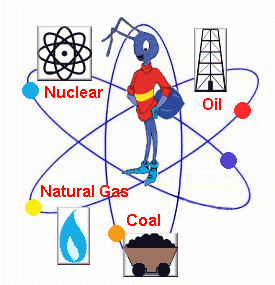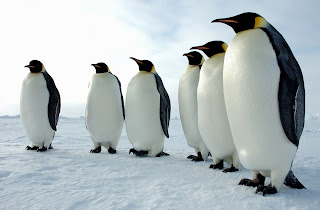Earth is divided in big peaces of land which are separated by the oceans. These
big pieces of land are known "Continents" which can be composed by
mass of land, island ad aspects not related to the geography such as: culture
and history. Long time ago around 300 million years ago the continents were
together, making a super-continent called "Pangaea", but 100 millions
after, this super-continent started separating, making the actual continents
where we know and live: America, Africa, Europe, Asia, Oceania and Antarctica. The humans were evolving and populating these big lands.
Click here
World Map

Pangaea and Division of the Continents
America
America is the newest of
the five traditional continents to be discovered and it is the second biggest
continent of the world. It was accidentally worked out by
Christopher Columbus on October 12th in 1492 while he was traveling to
arrive to India,
being colonized by some European countries in the following years.
Moreover, it had great civilization such as Aztecs, Mayas and Incas
where they left a important legacy in the American history. This continent is
composed by thirty six countries and divided in three zones, North America,
Central America and South America. North
America which is composed by three countries: Canada,
United States and Mexico. Central
America is composed by a narrow piece of land which works like a bridge
between North and South America; together with island and archipelagos
called "Caribbean". Some main
countries of this are Cuba, Honduras, El
Salvador, Panama,
Costa Rica, Puerto Rico, etc. The last zone is South America which is
composed by thirteen countries: Argentina,
Bolivia, Brazil, Chile,
Colombia, Ecuador, French Guyana, Guyana, Paraguay,
Peru, Surinam, Uruguay
and Venezuela.
Also, America borders to the
north by the Arctic Ocean, to the east by Atlantic Ocean, to the west by the
Pacific Ocean, and to the south by the Antarctica
separated by the Magallanes strait.
Africa
Africa is the continent
where the humans had their beginnings million years ago. It is third biggest
one on size and it presents a big reservation of plants and animals. Africa is a continent with many cultures and many ethnicities,
where the black people are the biggest one in this place. Also, Africa had biggest civilization over its lands as the Egyptian empire, leaving a main legacy in the history of the humanity. Moreover,
together with America and
Asia, this continent was colonized by the most important European empires such
as United Kingdom, France, Spain,
Portugal, Netherlands,
etc. During many years, Africa has been
considered the poorest continent of the world, where there are many problems of
starvation, illness and others. Africa is composed by fifty four
countries where some of them are: South Africa,
Cameroon, Nigeria, Libya,
Egypt, Congo, Morocco,
Sudan,
etc. Africa borders to the north by Europe, separated by the Mediterranean Sea,
to the south by the connection between the Atlantic and Indian Ocean, to the
west by the Atlantic Ocean and to the east by the Indian Ocean and the Arabic peninsula,
Asia.

Europe
Europe is known as the "Old Continent" and along with Asia, thus they forms a big continental mass. However Europe it separated from Asia due to the historical and cultural facts. Europe is the second smallest continent of the world and it is the place of the beginning of the western civilization. In this place there were civilizations suh as Greek and Roman and other original towns such as Viking, Celts, Germanic, etc. During the XVI until XIX century, some countries of this continents such as: Spain, England, France, Netherlands, Portugal, Germany, etc; had big empires where they colonized many territories around the world, especially in America, Africa, Asia and Oceania. Europe has forty five countries and it has the biggest economy of the world. Europe borders to the north by the Arctic Ocean, to the south by the Mediterranean Sea, to the west by the Atlantic Ocean and the east by Asia, separated by the Urals Mountains and the Black Sea.
Asia
As we watched in the last description, Asia and Europe are a same continental mass, but they are separated by their historical and cultural facts. Asia is the biggest and the most populated continent of the world. It has around the sixty percent of the world population and a rich cultural and historical input for the world. In this continent, there were important civilizations such as: Indian, Arabic, Chinese, Hebrews, Phoenicians and others. On the other hand, many cultures disappeared by the coming and the conquest of the European countries which arrived to colonize this place. During the XX century and until nowadays, Asia has been showing a big economic growth in some of its countries such as: China, Japan, Malaysia, South Korea, India, etc. Also, this continent is composed by many island and archipelagos which are located in the southeast Asia such as Indonesia, Sri Lanka, Thailand, Singapore, Vietnam, etc; and peninsulas such as: Arabic peninsula (Saudi Arabia, Oman, Yemen, Middle east), Korean peninsula (North and South Korea), Indochina (Cambodia, Laos, Vietnam), Indian peninsula (India), etc. Asia borders to the north by the Arctic Ocean, to the south by the Indian Ocean, to the west by Europe separated by the Urals Mountains and to the east by the Pacific Ocean.

Oceania
Oceania is the smallest
continent of the world. it is composed by big and small islands, archipelagos
making an area kwon "Polynesia" and a sub-continent which is Australia. This
continent like Asia, America
and Africa, it was colonized by European countries such as: England, Spain,
France and Netherlands.
The predominant climate in this area of the world is tropical, where there are
a lot of plants and animals. Also, there are corals and reefs in the
sea, giving a beautiful maritime scene. The most important countries are
Australia, New Zealand, Papua New Guinea and Fiji. Also, there are islands which
belong to other countries from other continents such as: Hawaii, Marshall
islands (U.S.A.) Easter island or Rapa Nui (Chile), etc. this continent is
surrounded by the Pacific and Indian Oceans.

Antarctica
Antarctica is the last
continent of the world. It is located in the end of the world of the planet
where the polar climate is present. The temperature always bellows zero degrees
Celsius, it snows a lot, the land is covered on ice and it’s common to
see strange phenomenon in this place. For example: the auroras re light
which are seen in the nights, having different colors such as: green, red,
yellow, purple, etc. Other phenomenon is the duration of the daytime and the
night. Between autumn and winter, the sky is always dark like the night,
because the sun disappears for six months. But in spring and summer the
situation changes, there is light daylong because the sun is present the second
part of the year. This continent is rich in natural resources such as petroleum,
gold, silver, copper, iron, etc. However this continent doesn't belong to
any country, but there are trades where some countries have bases on this
territory with the purpose of scientific advances, such as U.S.A, Russia,
England, France, Chile, Argentina, Australia, China, South Africa, etc.

Activities:
1)
Click here to see the power point and the activity


































.jpg)












